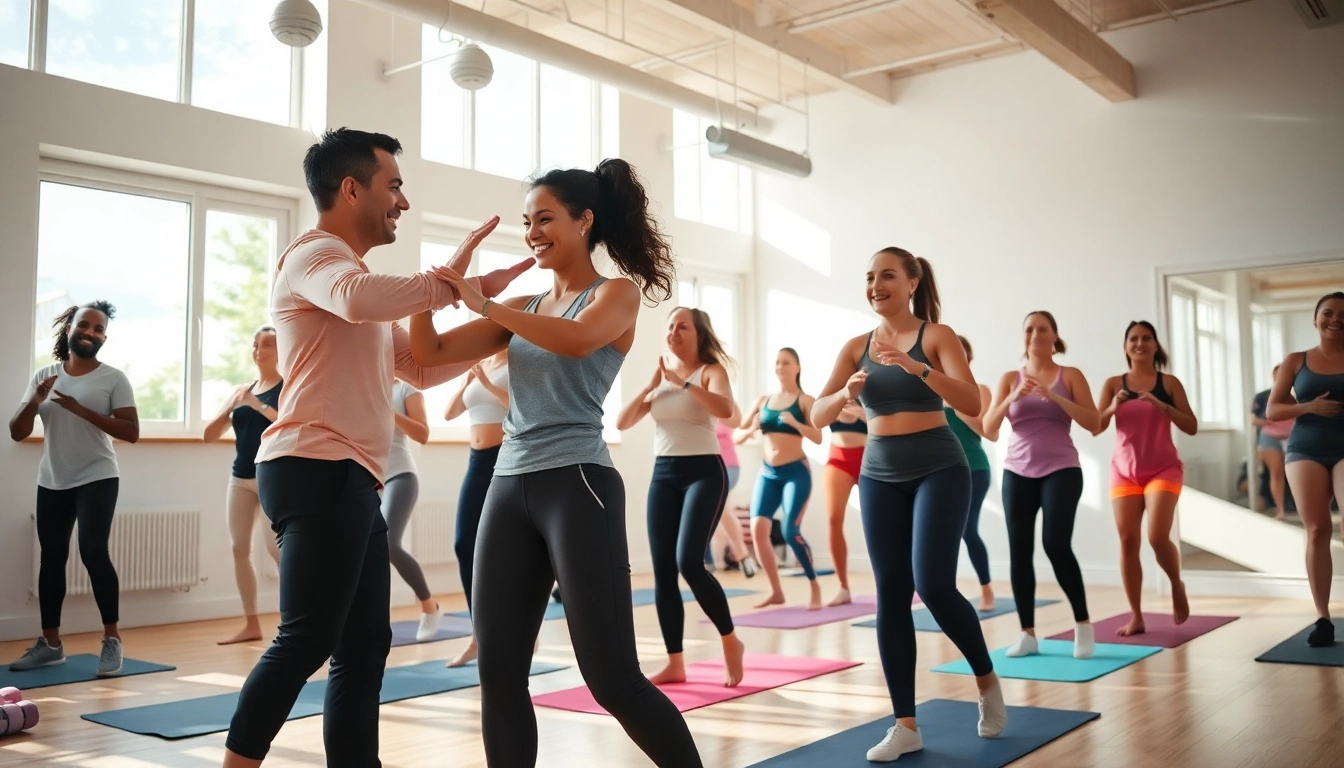Understanding Small Group Classes
What Is a Small Group Class?
Small group classes are defined as fitness sessions that are conducted in a more intimate setting, typically comprising 5 to 15 participants. Unlike traditional large fitness classes, these smaller sessions foster a more personalized approach, allowing instructors to give more tailored attention to each participant. This setting is designed to encourage more interaction and provide participants with the camaraderie of group workouts while still receiving individual guidance from qualified fitness professionals. This structure is particularly beneficial for those who may feel intimidated by one-on-one training or large group classes.
Benefits of Joining Small Group Classes
Engaging in small group classes offers numerous advantages. Firstly, participants often benefit from enhanced motivation and accountability; working alongside others encourages commitment to one’s fitness goals. The group dynamic provides a supportive environment where members inspire each other to push their limits further than they might when training alone.
Moreover, small group classes can lead to improved instruction quality. Instructors can focus on correcting form and offering personalized modifications based on individual fitness levels or requirements. As a result, participants are more likely to see progress and experience a lower risk of injury.
Additionally, cost efficiency is a significant factor. Many small group classes offer affordable rates compared to one-on-one personal training, making them an appealing option for people seeking professional guidance without the higher price tag.
Common Misconceptions About Small Group Training
Despite the numerous benefits, several misconceptions about small group training persist. One prevalent belief is that these classes are not suitable for beginners. In reality, small group classes often cater to a range of fitness levels, providing modifications and personalized attention that can help beginners acclimate effectively. Another myth is that participants must be exceptionally fit to join; in fact, many small group classes welcome all fitness levels and foster an inclusive environment. Finally, some believe that the social aspect of these classes detracts from workout intensity. On the contrary, camaraderie can actually enhance motivation and make workouts more enjoyable, leading to better adherence to fitness regimens.
Why Choose a Small Group Class Near Me?
Convenience and Accessibility of Local Classes
Choosing a small group class near me provides the undeniable convenience of accessibility. Local classes save commuting time and make it easier to fit workouts into busy schedules. Additionally, finding classes with flexible scheduling can accommodate various routines, enabling participants to maintain consistency in their fitness journeys. The proximity of local gyms and studios encourages regular attendance, which is key to achieving fitness goals.
Community Building and Social Engagement
Local small group classes foster a unique sense of community. Participants often form friendships and support networks that can extend beyond the gym, enhancing the social aspect of fitness routines. This engagement not only adds fun to workouts but can also help individuals feel a bigger sense of belonging. Many find that the shared commitment to fitness leads to a supportive environment where individuals motivate each other, making classes both enjoyable and effective.
The Impact of Local Instructors on Your Fitness Journey
Local instructors deeply understand the fitness needs and goals of their community, adapting their sessions accordingly. Their familiarity with the participants can enhance accountability; they can provide personalized feedback and adjustments while building meaningful relationships with the class. This level of engagement often results in a more significant impact on members’ fitness journeys. Finding knowledgeable, enthusiastic instructors goes a long way in maintaining motivation and ensuring that participants get the most out of their sessions.
What to Look for in a Small Group Class
Class Size and Composition
When searching for a small group class, the size and composition of the class are critical elements. Ideally, a class should maintain a size that allows for adequate instructor interaction, typically anywhere from 5 to 15 participants. This range ensures that everyone receives the attention they need without overwhelming the instructor. Additionally, the diversity of the group should align with personal goals, whether focusing on strength training, flexibility, cardio, or a mix of various fitness modalities.
Instructor Qualifications and Experience
A key factor in the effectiveness of a small group class is the instructor leading it. Participants should look for instructors who hold relevant certifications and have experience in the specific type of training offered. Instructors’ backgrounds can significantly affect the quality of the classes; they should demonstrate expertise in guiding diverse clientele and should be able to modify exercises as needed for each participant. Those eager to progress in their fitness journey may also benefit from trainers who stay updated on the latest trends and research in the fitness industry.
Class Variety and Specializations
Variety is vital when selecting a small group class. Many fitness needs can be met through eclectic programming that includes options such as HIIT, Pilates, yoga, strength training, or functional fitness. Participants should explore different formats that align with their goals, assess if specializations are offered, and see if classes cater to specific interests, such as athletic training, recovery workouts, or weight management programs.
Cost and Commitment Levels for Small Group Classes
Typical Pricing for Classes
Costs for small group classes can vary widely based on location, class type, and facility quality. It’s reasonable to expect average pricing to range from $10 to $35 per class. In high-demand urban areas, some classes may even command higher fees. Additionally, specialized programming such as training for triathlons or boot camps could have premium pricing, reflecting the advanced coaching provided.
Membership Options vs. Drop-In Rates
Prospective participants should evaluate membership options versus drop-in rates when considering joining a small group class. Membership packages typically offer significant savings for committed attendees, encouraging regular attendance. Meanwhile, drop-in rates provide flexibility for individuals unable to attend consistently but who still want to experience small group training. Many facilities offer introductory rates; thus, trying out a few classes can help determine if a larger commitment is worth pursuing.
Finding Discounts and Promotions Near You
Many fitness studios and health clubs offer promotional discounts to attract new members. These could include first-class free trials, seasonal promotions, or referral bonuses for bringing in friends. It’s advisable to keep an eye out for these opportunities as they can significantly ease the financial commitment while exploring new class offerings. Social media platforms can also be a great source for discovering special deals in the local area.
Real Success Stories from Small Group Class Participants
Personal Transformation Through Group Training
Numerous participants have shared their transformative experiences from attending small group classes. Many report significant improvements not just in physical fitness, but also in mental health and emotional well-being. For example, a participant who battled anxiety found that working out in a supportive small group setting not only helped improve their fitness but also provided the social encouragement needed to overcome personal challenges. As Bonds are built through workouts, many individuals report enhanced self-esteem, motivation, and a renewed sense of purpose.
Success in Building Long-Term Fitness Habits
Success stories often illustrate how small group training can foster sustainable fitness habits. Participants frequently express how their attendance in regular small classes helped establish a routine that changed their lifestyle for the better. The combination of social engagement, accountability from peers, and personalized attention from instructors often leads to long-term adherence to fitness plans. This paradigm shift can successfully replace sedentary habits with active routines that greatly enhance overall health.
Feedback and Reviews from Local Class Attendees
Understanding what past and current attendees have to say about local small group classes can offer invaluable insights when choosing a class. Reviews often highlight aspects such as instructor effectiveness, class atmosphere, and overall participant satisfaction. Platforms like Yelp or community Facebook groups can serve as excellent resources for honest feedback. Prospective attendees should pay attention to patterns in ratings, which may point to both strengths and weaknesses in specific classes or facilities, empowering informed decisions when selecting the right environment for their fitness journey.








